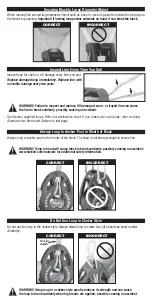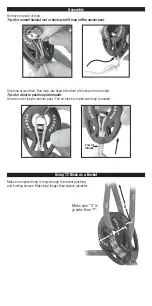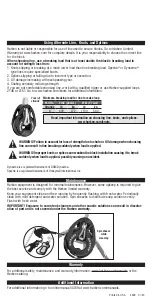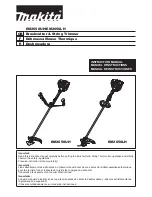
WARNING! Tying to head will cause block to break suddenly, possibly causing an accident:
www.harken.com/manuals for additional safety information.
Inspect loop for chafe or UV damage every time you sail.
Replace damaged loop immediately. Replace line with
no visible damage every two years.
Inspect Line Every Time You Sail
WARNING! Failure to inspect and replace UV damaged, worn, or frayed line can cause
the line to break suddenly, possibly causing an accident.
Do Not Use Loop in Choker Style
Use Harken supplied loops. Refer to specification chart. If you make your own loops, refer to
Using
Alternate Line Knots and Splices
on last page.
Always Loop to Anchor Post in Mouth of Block
Always loop to anchor post in the mouth of the block. The head is not strong enough to secure line.
CORRECT
INCORRECT
Assembly
Remove one end of loop.
Tip: Use a small hooked tool or hex key to lift loop off the anchor post.
Slip loop around bail. Run loop into head at bottom of block and into mouth.
Tip: Use a tool to push loop into mouth.
Secure end of loop to anchor post. Pull on block to make sure loop is seated.
Mouth
Head
WARNING! Using loop in a choker-style greatly reduces its strength and can cause
the loop to break suddenly when high loads are applied, possibly causing an accident.
Do not use the loop in the choker-style. Always attach loop to create four (4) strands as shown under
Assembly.
INCORRECT
Make sure spliced loop is long enough to prevent pinching
and binding sheave. Make loop longer than sheave diameter.
Make sure “X” is
greater than “Y”.
X
Y
Using T2 Block as a Becket
CORRECT
Four (4)
strands
Four (4)
Strands
Securing Block to Large Diameter Object
When running line around large-diameter object such as a boom, use a ring sized to restrain the loop legs to
the block's top opening.
Important! If lashing loop pushes outwards on head, it can break the block.
INCORRECT
CORRECT






















